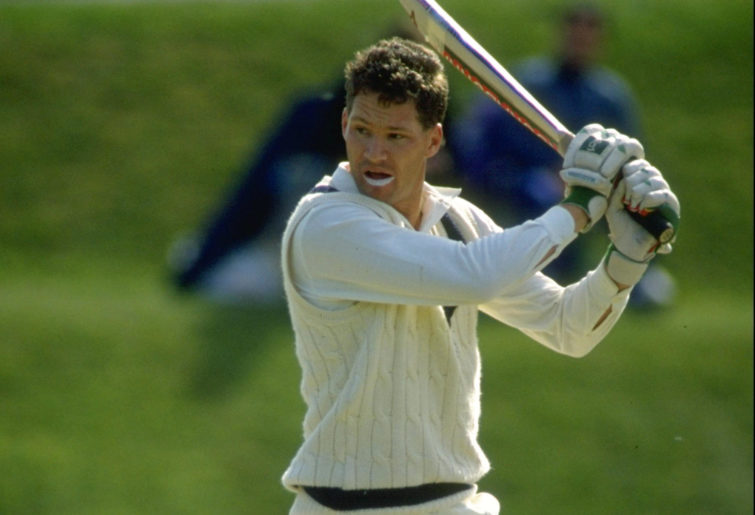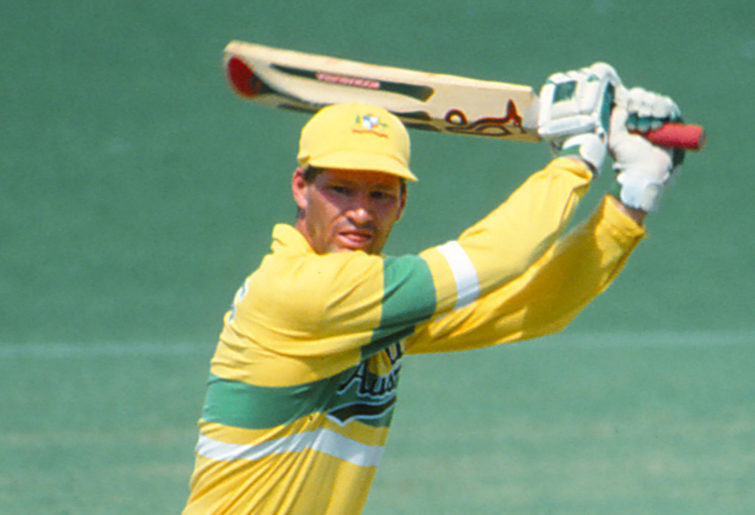Dean Jones was well down the list of my favourite Australian batsmen of his era, but I always thought he was a fine technician, a man of considerable courage, and I was very impressed by his interview with Crash Craddock on Cricket Legends.
His omission from the Australian Test side in 1992-93, like many selection decisions, was controversial, and the controversy has lingered and left a legacy of angst among both those who supported the decision and those who opposed it, as rent posts on The Roar show.
The real tragedy of the controversy is that it may largely be the creation of a very strange view that selectors don’t need and should not explain their decisions. I don’t share that view. If a selection has any merit, it must be able to be explained in lucid terms. The players are entitled to know what they may have to do, if they can do anything, so they can make career decisions upon which their livelihoods depend, and the public deserve to know because their money keeps the selectors in a job.
The explanation for Jones’s omission based on numbers struggles with the problem that, as one of the selectors at the time, John Benaud, says in his book Matters of Choice: A Test Selector’s Story “statistics can reinforce any argument”.

(Chris Cole/Allsport)
A series of posts by one blogger on this site reflects this issue and the tone of some comments might leave a bit to be desired. While it is not inherently wrong to focus on centuries or half-centuries or how many were scored in ‘dead Tests’, it is also a fraught argument. It places a huge weight on 100 or 50, but what of 48 or 93 or even 29 made on a fiendish pitch? Is an opener’s score worth more than that scored by one of those lazy swine who bat in the middle order and make their runs against the tired and/or second-stringers after the honest opener has been battered and broken in blunting the bastards bowling thunderbolts?
It is not that numbers shouldn’t be contextualised, but they only take us so far.
When Geoff Marsh was dropped at the end of the 1991-92 season there was a lot of sadness. His replacement in the last Test of that season was basically ostracised in the dressing room. Marsh had brought more than just runs to the team – Border felt he contributed ideas, a good listening post, loyalty and the right kind of attitude. This shows the complexity of team selection.
Yet for Marsh the numbers did in themselves have a terrible logic to support his demise. In his last series, at home against India, he averaged 26 and his career Test average was 33. He averaged 25 against the West Indies in 1991 and 22 in the series against the West Indies in 1988-1989. No need to dig about in those numbers to dismiss centuries or double centuries made in ‘dead Tests’.
The difference with Jones was that the numbers provided no similar, clear basis for his omission. He was averaging 46 across his Test career. He had averaged 64 in the 1988-89 series against the West Indies and in the most recent series against them in 1991 he averaged 30 – ahead of Steve Waugh, 16; Greg Matthews, 9; Ian Healy, 19; and Geoff Marsh, 25.
Just ahead of him in that series were Allan Border, 34, and David Boon, 33. Jones averaged 44 in the 1991-92 series against India when Marsh was dropped (and Mark Waugh averaged 13 over four Tests), and 55 in his last series against Sri Lanka in Sri Lanka, topping the averages.
Mark Waugh had averaged ten and managed four consecutive ducks. There were two rain-affected Shield games ahead of the selection of the XI for the first Test against the West Indies in 1992-93 and there was no sense in which it could be said that Shield form provided some obvious case one way or another. Mark Waugh had managed to both fail and succeed in his usual way across the two Shield games he played – proof of his genius or his profligacy depending on how you want to look at the numbers.
A series of posts and John Benaud both tried to play with the numbers to arrive at a case, but the problem is that you can also play with the numbers to dismiss the case. With Marsh it was clear-cut. If Mark Waugh had been omitted, everyone would have looked at his poor form in two successive Test series and, combined with his youth, would have been inclined to accept it to a greater or lesser degree.
But here is the number that really is hard to argue with: Jones was 32. He really had only three or four seasons left at the top level in all likelihood. Unlike Waugh, his omission was likely to be terminal.
A non-number that mattered was also that Jones had become a popular hero. Whether one agrees or not, he had. To dismiss his Adelaide double century against the West Indies is churlish and fails to understand what it meant at that time, in that place, to so many. It was an important innings. It denied the West Indies a 4-1 series win and it created the prospect for a time of an unlikely Australian win.
It took some of the gloss off the West Indies’ series win. They had humbled England 5-0 in England in 1988, and the same England had won the Ashes in Australia in 1986-87. In 1987-88 New Zealand nearly beat Australia in Australia. Jones had earnt his place in Australia’s hearts with that double century against the magnificent and terrifying West Indies.

(Photo by Getty Images)
What the selectors needed to do was have the integrity and courage to back up their selection decisions with an honest explanation to the player and the public. Only a fool thinks selection is easy. Anyone who has done it, even at park level, knows how hard it is. Benaud hints at the need for renewal, for finding a point of difference and someone not traumatised (as he puts it) by losing to the West Indies. However, the argument is then clouded by a retreat to an attempt to argue about form and numbers that are just not persuasive.
There were also issues about Jones’s personality and private life that were playing out in the team. Border made no protest the way he did with Marsh. Like it or not, there were team arguments for dropping someone and team arguments were what should have been relied on. The issue with Mark Waugh’s dreadful form should have been met head-on, and they should have said that they saw him as a young talent who had done well against the West Indies (his 1991 average was 61, although one poster discounted his superb final Test century) and who they saw as a big part of the Test side’s future. Ugly but honest.
Another number was on the selection panel – Higgs’s position is not clear but the other selectors voted to drop Jones.
Martyn was only one of several promising young players and renewal was a legitimate if harsh argument. The Waughs were four years younger than Jones and entering their peak years as he was exiting his. Damien Martyn, Justin Langer et cetera were another five years younger than the Waughs. Boon was the same age as Jones but his form was not an issue. Border was older still, but he was, well, Border. No-one at all was talking about dropping him. So, that really left one person.
My memories of Jones are not going to be wrapped up in the controversy. Selection is littered with dudded careers, politics, nepotism, poor judgement and bold acts of genius that launched a career.
My memories of Jones are of a very honest man with a difficult personality who was so open with Crash Cradock. A man beloved of his wife and children. A man who scored a lot of runs for a Test team in near-perpetual crisis during his prime years. A man who was not too scarred by the West Indies to tell a bowler to remove a wrist band that blended with the colour of the ball (red when they played Tests, white when they played one-dayers), a man who scored a brilliant and courageous 216 at Adelaide in 1989 against a rampaging West Indies (Malcolm Marshall, Patrick Patterson, Curtly Ambrose, Courtney Walsh) who wanted revenge for the loss in Sydney. In that innings he came in at 3-75.
One poster refers to better batsmen against the West Indies. Here are their scores: Ian Healy, 0; S Steve Waugh, 12; Mark Taylor, 3; David Boon, 34; Allan Border, 64. Each of these players were of genuine Test match quality. Healy is my favourite Australian wicketkeeper, Steve Waugh my favourite Australian batsman, Border a man whose qualities I revere. Taylor the greatest captain I have ever seen – yes, ahead of Mike Brearley – and Boon was an incomparable player. Numbers.
To characterise Jones’s record against the West Indies as ‘very poor’ does him a very poor service. It requires a dubious statistical sleight of hand. it smacks of a lack of grasp of how relentless the West Indies were. It shows a failure to grasp how terrifying their bowling onslaught was.
Did the selectors get the decision to end Jones’s Test career right? That will depend on what numbers you go by. At the time I felt sad for Jones. I felt Mark Waugh was very lucky. I felt Steve Waugh was even luckier. I thought the idea of renewal and judicious blooding of the right talent was justifiable.
The West Indies beat Australia 2-1. Martyn averaged 28 in four Tests, Steve Waugh 25 and Mark Waugh 37. Healy averaged 16. Mark Waugh aside, they all averaged less than Jones in his last series against the West Indies in the West Indies. I don’t know what their averages would be like if we ignored ‘dead Tests’, because it is a near pointless exercise.
But I do know that over time Martyn, Langer and Steve Waugh went on to more than fulfil their promise. I do know that Jones and the public were not given a proper explanation for his dropping despite there being an arguable case and that Jones was a superb player and a decent man.
That is more than numbers.
from The Roar https://www.theroar.com.au/2020/09/29/dean-jones-and-a-matter-of-numbers/

0 Comments